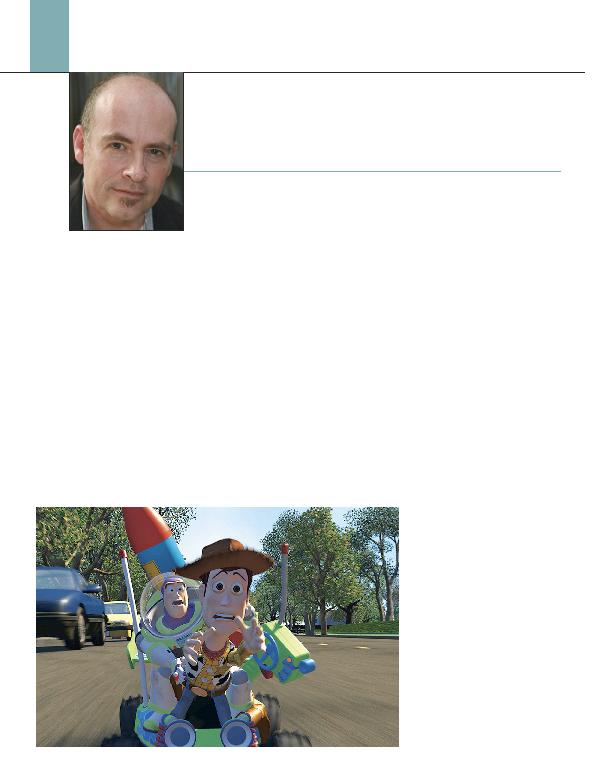
Pixar's 10 films have earned an astounding
$5.56 billion worldwide, picked up 24 Acade-
my Awards, including five for Best Animated
Feature, and many other awards, including a
Lifetime Achievement Award for Pixar's Brain
Trust at last year's Venice Film Festival. Given
this phenomenal amount of box office and
critical success, no one can deny that Pixar is
doing something right.
their process, their focus on story and charac-
ters, and their love of those rare family films
that parents can enjoy with their children,
rather than endure like so many other ani-
mated features. And yet, most animation stu-
dios have attempted to emulate Pixar's way
without success, so there must be something
deeper that contributes to Pixar's winning
streak. Some argue it's Pixar's technical break-
throughs. After all, they were the CG pioneers,
the first out of the gate with Toy Story. Since
then, Pixar's filmmakers have challenged
possible with each new film. And how many
times have we heard of Pixar as a filmmaker-
led studio where the story comes first, thanks
to its people, its workforce of storytellers and
animators?
ers and that is focus on the story's emotional
core, which is achieved through a balance of
character empathy and emotional stakes that
come from a worthy and universal motiva-
tion. When filmmakers focus on a story's
emotional core, their films often succeed;
when they don't, their films fail, often sur-
prisingly, considering that all the other right
elements were present.
Frank Thomas, one of the Nine Old Men --
the original artists behind classic Disney ani-
mated features from Bambi to The 101 Dal-
matians -- said: "We call it `the warmth,' the
inner feelings of the character. It all comes
back to their heart and how they think about
it; how does the character feel and why does
he feel that way?" That warmth, those mov-
ing moments in many Disney classics and
more recent films from other studios, is a les-
son to all storytellers, not just animation writ-
ers. And all Pixar films have it -- from Toy
Story to Up. There's a much-talked about mo-
ment in Toy Story 2 -- "Jesse's Song" sequence,
as recalled by John Lasseter: "No one had a